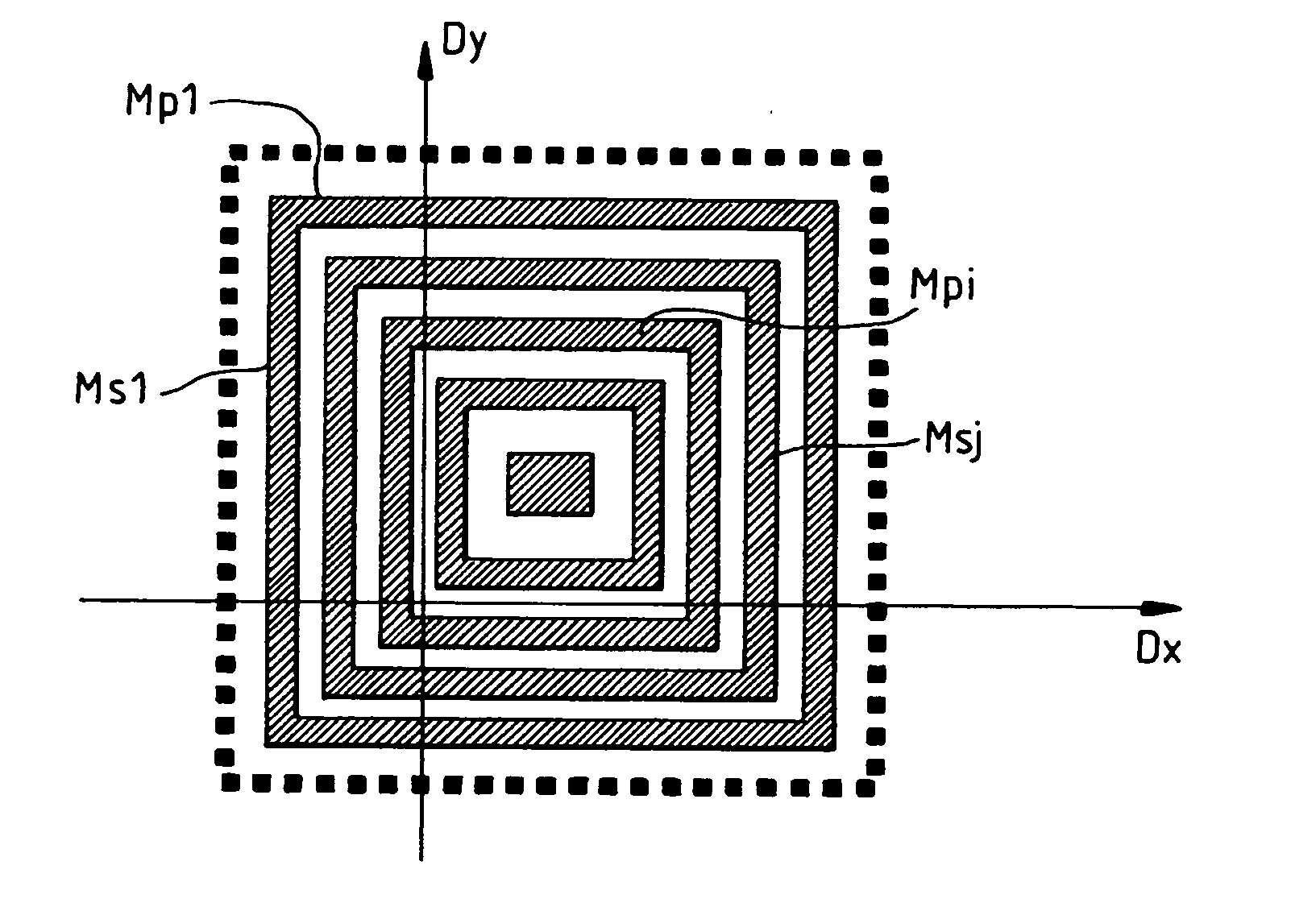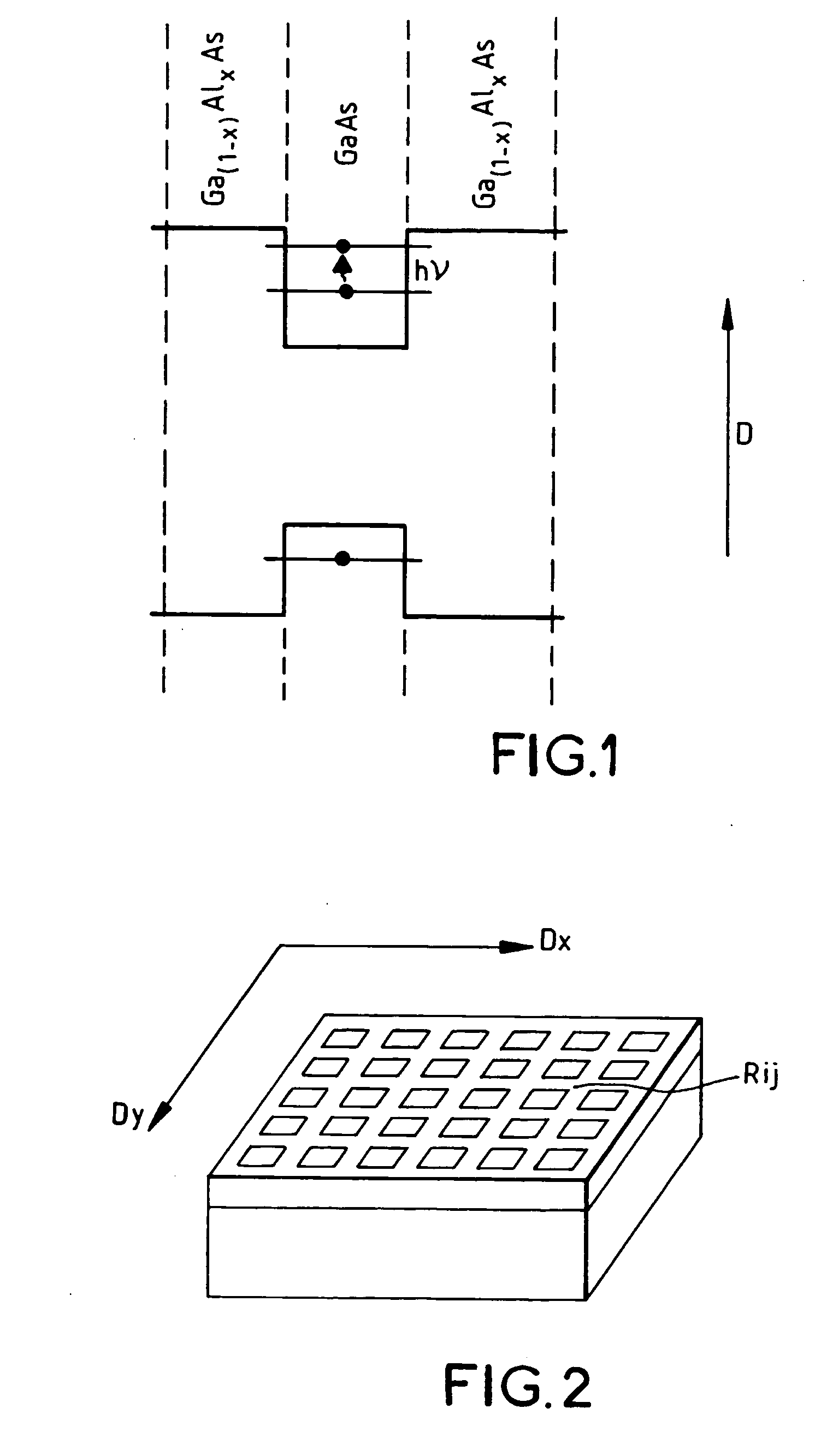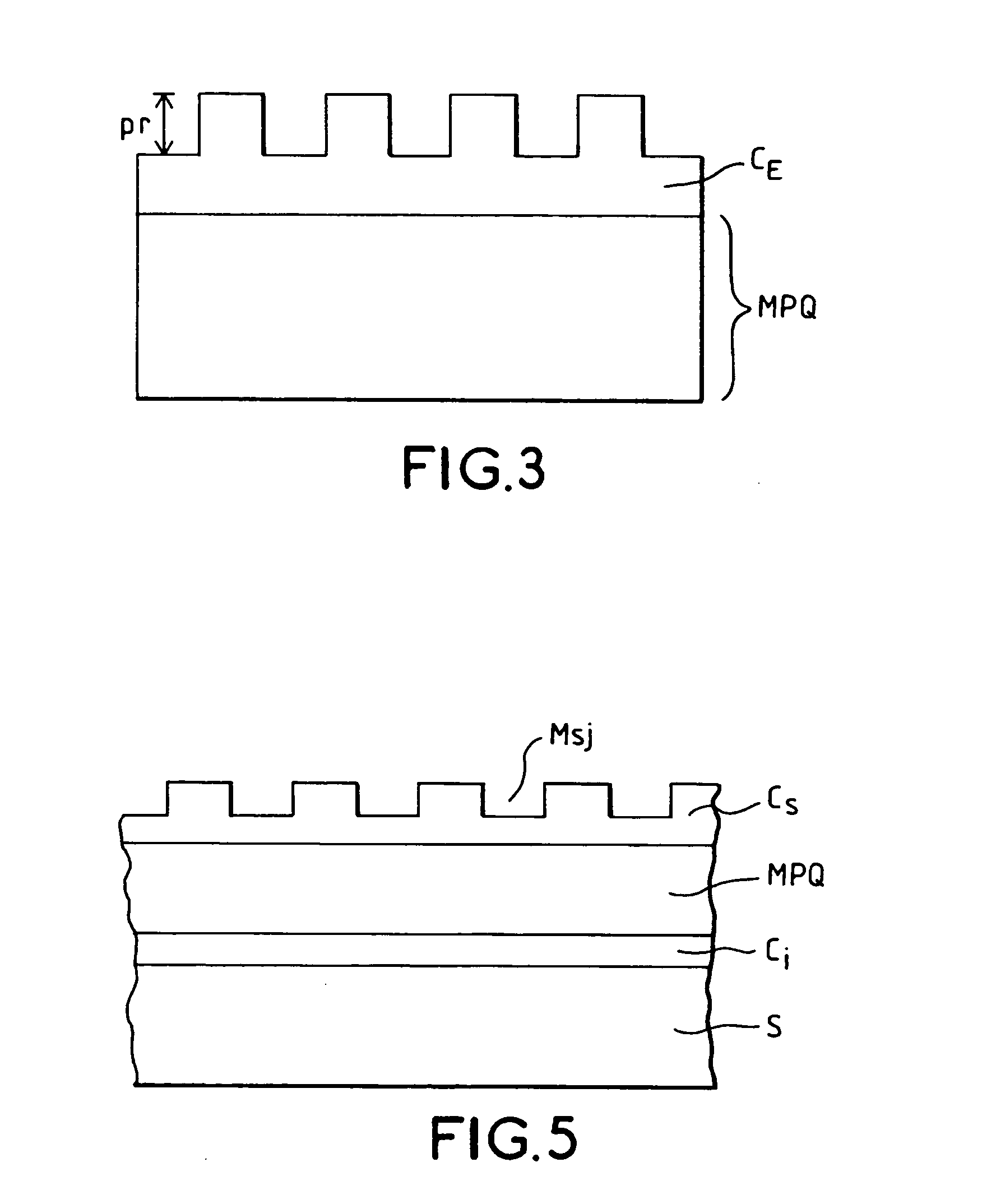Electromagnetic wave detector with an optical coupling surface comprising lamellar patterns
- Summary
- Abstract
- Description
- Claims
- Application Information
AI Technical Summary
Benefits of technology
Problems solved by technology
Method used
Image
Examples
embodiment example
[0046] We will now describe an example of a detector according to the invention that operates in the infrared range, and more particularly one suitable for the 8-12 micron range.
[0047] The lower ohmic contact layer made of Si-doped GaAs with a doping content of 5×1018 cm−3 and a thickness of typically 2 microns is deposited on an intrinsically undoped GaAs substrate.
[0048] The multiple quantum well structure is produced by the stacking of 50 wells composed of an Si-doped GaAs layer with a charge carrier concentration of 5×1018 cm−3 with a thickness of 5 nm, this being inserted between two barrier layers consisting of Ga0.75Al0.25As with a thickness of 50 nm.
[0049] The upper contact layer is identical to the lower contact layer and also has a thickness of 2 microns.
[0050] The lamellar features are produced within this upper contact layer.
[0051] To obtain the desired diffracting effects at an operating wavelength around 9 microns, the etch depths are 0.7 microns and the spacing o...
PUM
 Login to View More
Login to View More Abstract
Description
Claims
Application Information
 Login to View More
Login to View More - R&D
- Intellectual Property
- Life Sciences
- Materials
- Tech Scout
- Unparalleled Data Quality
- Higher Quality Content
- 60% Fewer Hallucinations
Browse by: Latest US Patents, China's latest patents, Technical Efficacy Thesaurus, Application Domain, Technology Topic, Popular Technical Reports.
© 2025 PatSnap. All rights reserved.Legal|Privacy policy|Modern Slavery Act Transparency Statement|Sitemap|About US| Contact US: help@patsnap.com



